[social_warfare]
Beyond the Clouds: The 10 Tallest Structures Humanity Has Built
Imagine standing so high above the earth that the hustle and bustle of city life transforms into a serene, almost silent, expanse. This isn’t a scene from a futuristic movie; it’s a reality, thanks to the awe-inspiring structures humanity has built. These come in the form of the world’s tallest buildings, reaching for the clouds and beyond.
In a testament to human engineering and architectural prowess, we’ve pushed the boundaries of what’s possible, crafting towers that scrape the sky.
1. Burj Khalifa, Dubai, UAE
In the heart of Dubai stands the Burj Khalifa, a titan among giants. Soaring at 828 meters, it’s not just a building; it’s a symbol of what humanity can achieve when we dare to dream big. Since its completion in 2010, it has held the title of the tallest building in the world, a marvel of modern engineering and architectural genius.
Constructed with over 330,000 cubic meters of concrete and designed to resemble the Hymenocallis flower, the Burj Khalifa is as sturdy as it is beautiful. It features the world’s highest outdoor observation deck, the At the Top Sky Lounge on the 148th floor, offering visitors a bird’s eye view of the city.
Visitor Tips: To truly experience the majesty of the Burj Khalifa, plan your visit at sunset when the city below transitions from day to night, and the skyline lights begin to twinkle. Tickets to the observation decks are cheaper if booked in advance online. And while you’re there, don’t miss the Dubai Fountain show at the base, a choreographed spectacle of water, music, and light.
Why It’s a Must-See: Beyond its staggering height, the Burj Khalifa is a masterpiece of international collaboration and cultural symbol of the UAE’s rapid ascent on the world stage. It’s not just an architectural marvel; it’s a beacon of Dubai’s luxurious and innovative spirit.
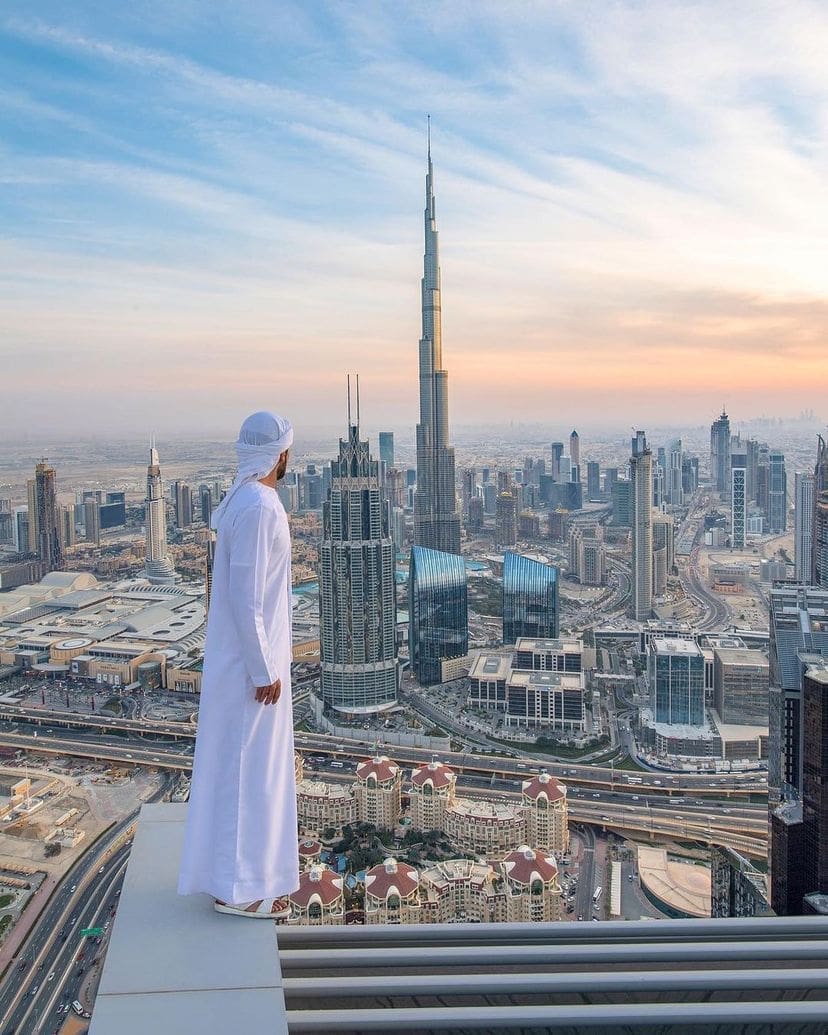
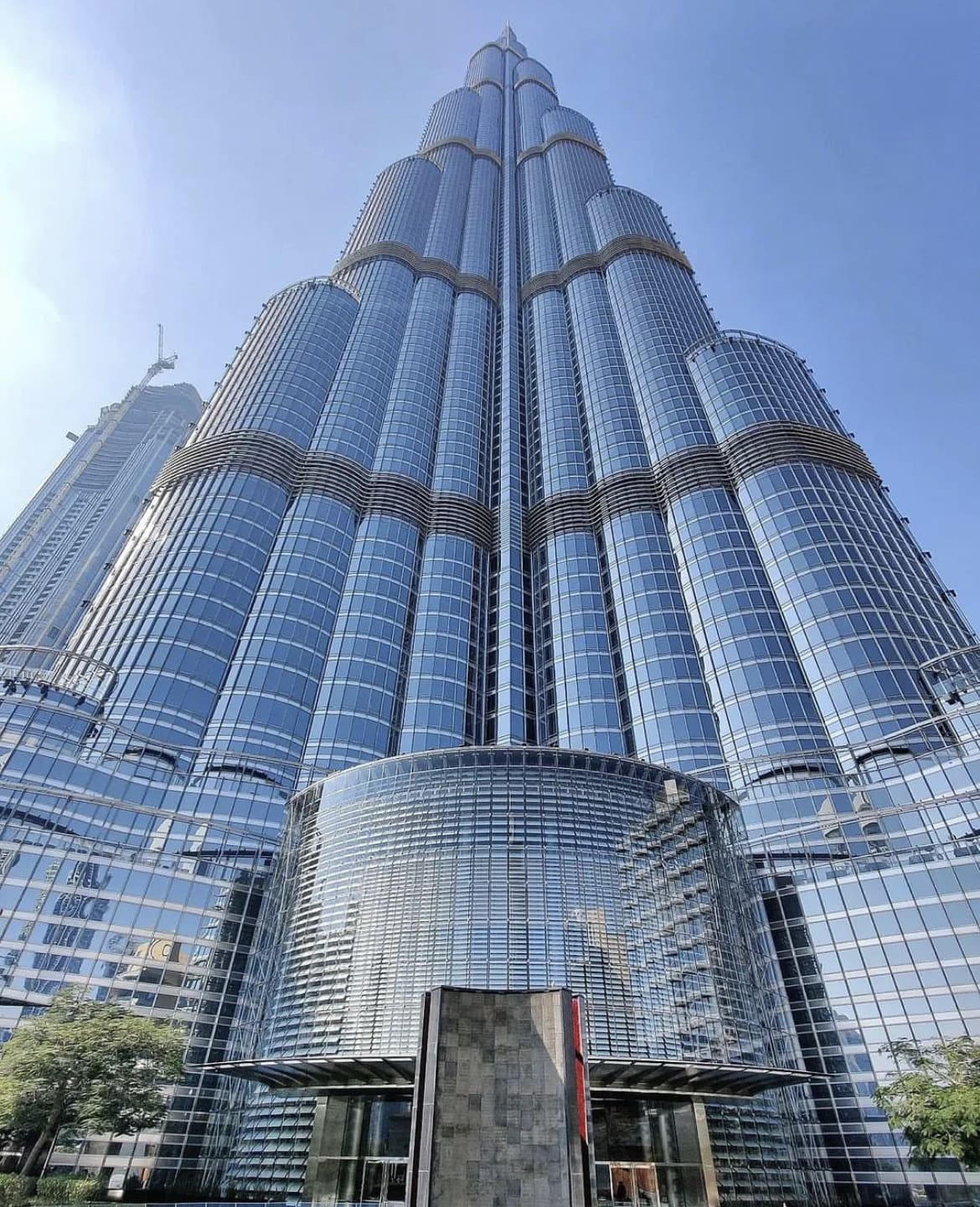
2. Warisan Merdeka Tower, Kuala Lumpur, Malaysia
The Warisan Merdeka Tower, piercing the skies of Kuala Lumpur at 644 meters, is Malaysia’s proud answer to the world’s tallest structures. Recently completed, it reshapes the city’s skyline, symbolizing Malaysia’s progress and futuristic ambitions.
This tower isn’t just about height; it’s about sustainable development and cultural homage. The design incorporates elements of Malaysian heritage while embracing green technology, aiming for a GBI Platinum rating. With 118 floors, it houses offices, a hotel, and retail spaces, becoming a self-contained ecosystem.
Visitor Tips: While the tower itself is an architectural feat, the surrounding Merdeka 118 precinct offers parks, a mall, and cultural attractions. For the best experience, visit the observation deck early in the morning to beat the crowds and the haze, ensuring a clear view of the sprawling city below.
Why It’s a Must-See: The Warisan Merdeka Tower is more than just a building; it’s a testament to Malaysia’s aspirations and commitment to sustainability. It offers not only breathtaking views but also a glimpse into the nation’s heart, where tradition and progress intersect gracefully.
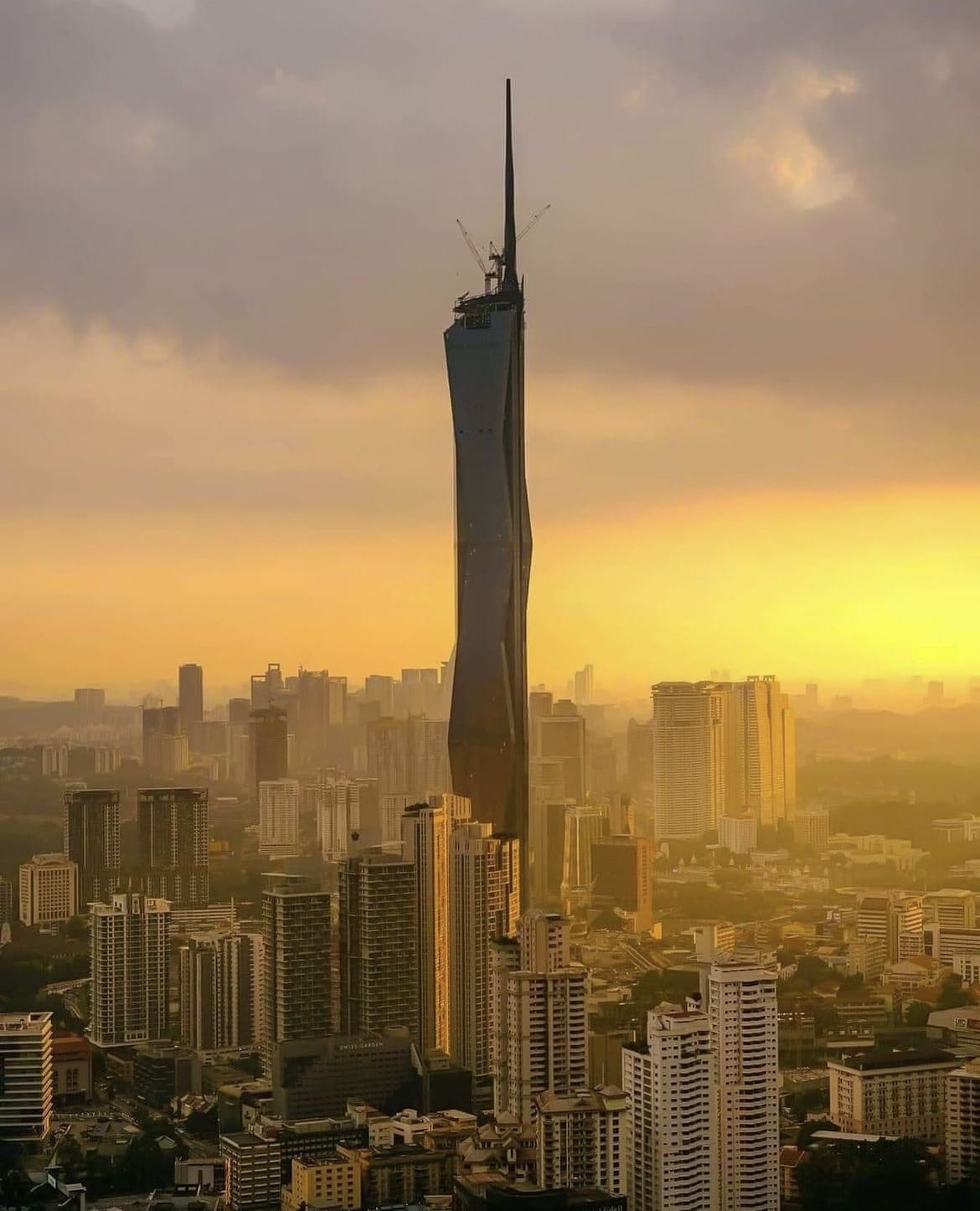
3. Shanghai Tower, Shanghai, China
Rising into the clouds at 632 meters, the Shanghai Tower twists elegantly over the city’s Pudong district, a spiraling testament to China’s economic and architectural ascent. As the second tallest building in the world, it encapsulates a vision of sustainability and verticality, offering a glimpse into the future of urban living.
The tower’s design is not just for show; its twist reduces wind load on the building by 24%, a marvel of aerodynamic efficiency. Housing offices, hotels, and observation decks, its 128 stories are wrapped in a double-skin façade, an innovative approach to insulation and energy conservation. The Shanghai Tower also boasts the world’s fastest elevators, rocketing visitors to the sky at a breathtaking 18 meters per second.
Visitor Tips: The best way to experience the Shanghai Tower is by heading straight to the observation deck, offering unmatched 360-degree views of the sprawling metropolis below. Visit on a clear day to ensure the best visibility. After descending, explore the tower’s base, a bustling area with shopping and dining options set within a stunning garden landscape.
Why It’s a Must-See: Beyond its architectural innovations, the Shanghai Tower stands as a symbol of China’s futuristic vision, blending cutting-edge technology with environmental mindfulness. It’s not just a building; it’s a blueprint for the cities of tomorrow.
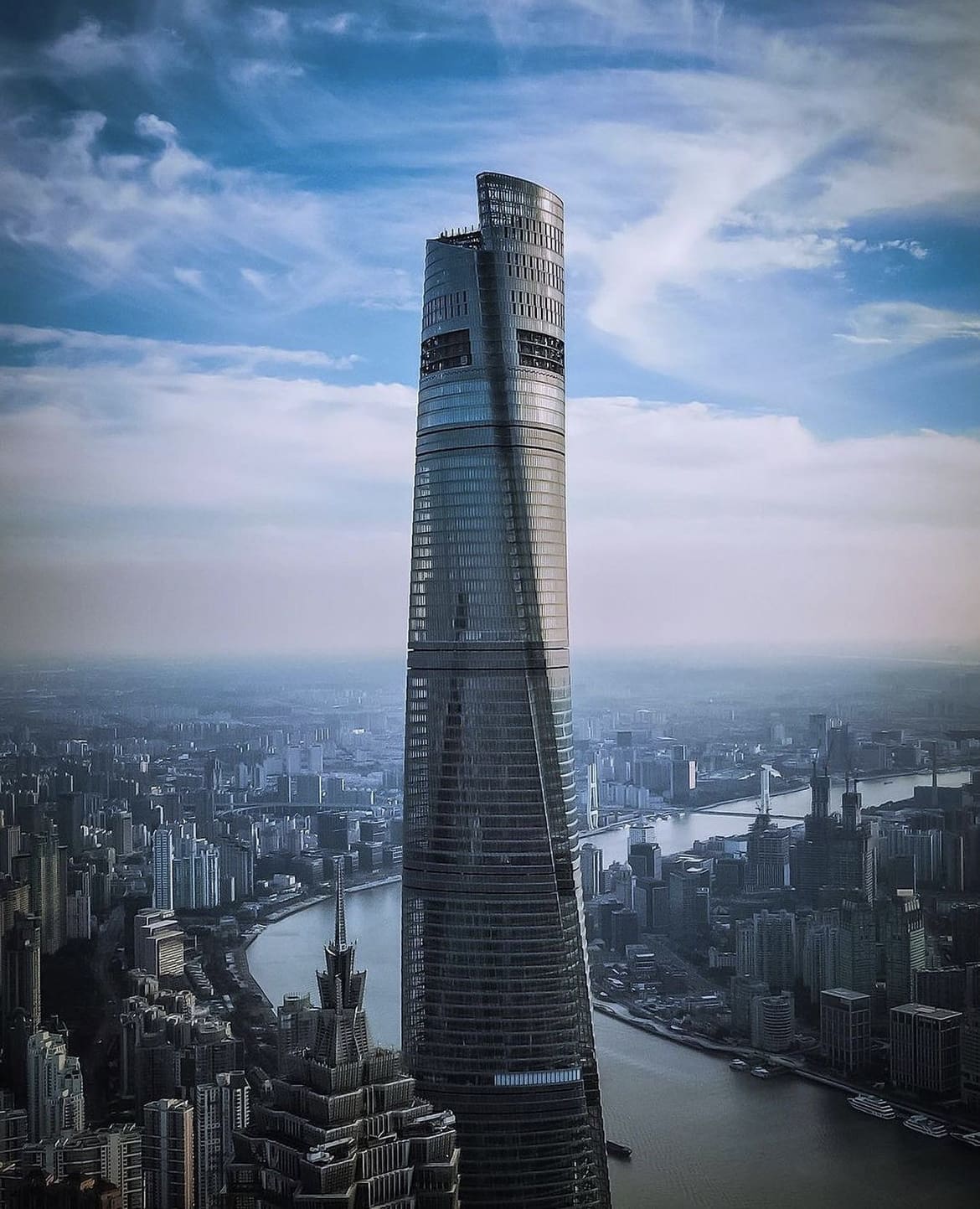
4. Abraj Al-Bait Clock Tower, Mecca, Saudi Arabia
Dominating the skyline of Mecca, the Abraj Al-Bait Clock Tower reaches 601 meters, making it one of the world’s tallest structures and an iconic landmark for millions of Muslims. Part of the King Abdulaziz Endowment Project, it serves both practical and spiritual purposes, located just steps away from the world’s largest mosque and Islam’s most sacred site, the Masjid al-Haram.
This tower is more than its height; it’s home to the world’s largest clock face, a beacon for the faithful. The complex includes a shopping mall, a museum of Islamic art, and a luxurious hotel, accommodating pilgrims and visitors with reverence and grandeur. Its construction reflects a blend of Islamic tradition and modern amenities, aiming to support the Hajj and Umrah pilgrimages.
Visitor Tips: While access to the clock tower complex is unrestricted, visiting the nearby Masjid al-Haram and Kaaba is reserved for Muslims. Regardless of your faith, the clock tower offers an impressive sight, especially when illuminated at night. The surrounding area is a hub of activity, offering diverse dining and shopping experiences.
Why It’s a Must-See: The Abraj Al-Bait Clock Tower is not just an architectural achievement; it’s a cultural and religious landmark, embodying the heart of Islamic faith and hospitality. Its presence enriches the Mecca skyline, serving as a modern companion to ancient rituals.
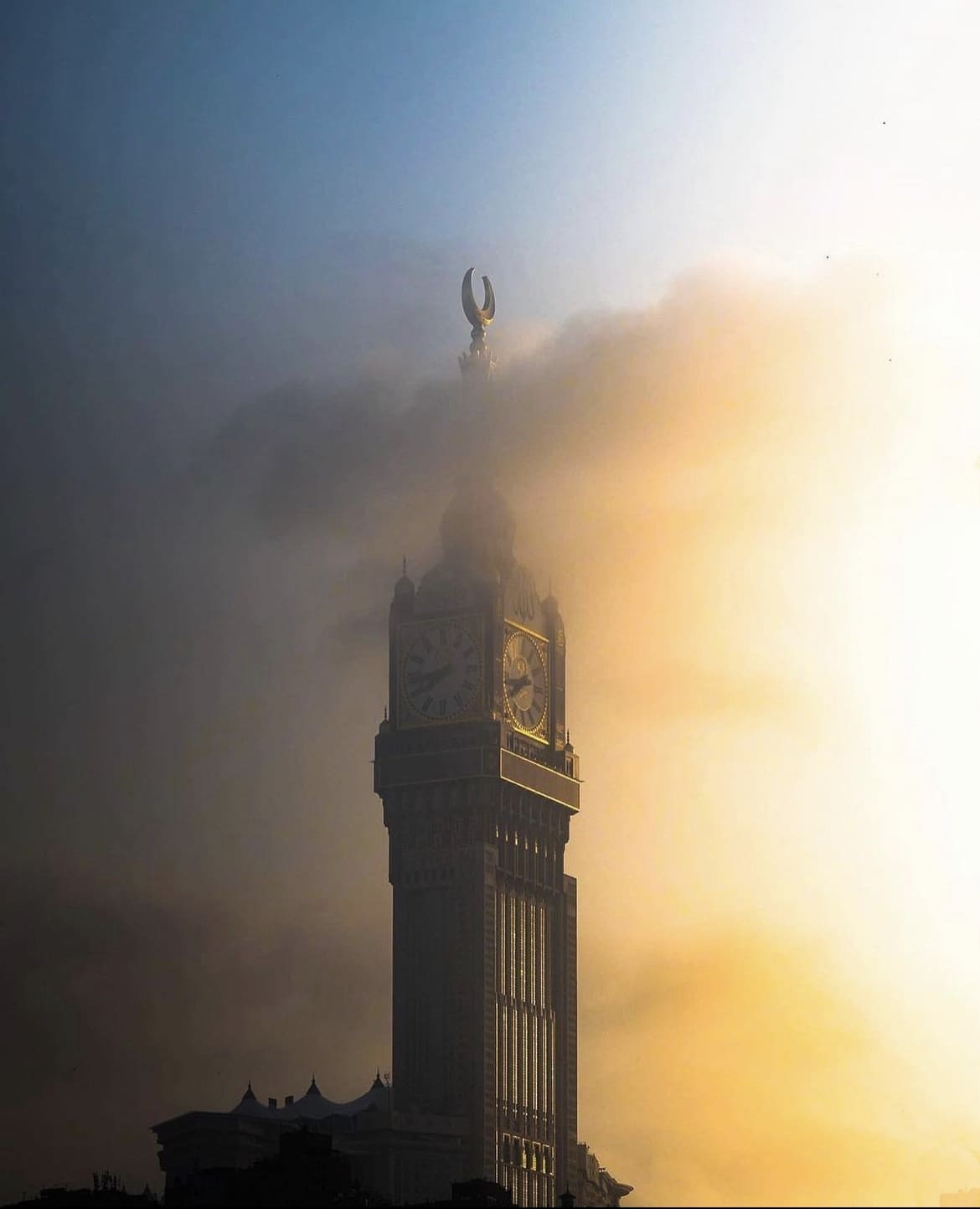
5. Ping An Finance Center, Shenzhen, China
In the rapidly growing metropolis of Shenzhen, the Ping An Finance Center stakes its claim in the sky at 599 meters. This colossal structure is the physical embodiment of China’s financial ambitions, standing as a beacon of progress in one of the country’s most dynamic cities. As a hub of commerce and innovation, it mirrors Shenzhen’s transformation from a fishing village to a global technology powerhouse.
The tower’s sleek form is covered in a skin of stainless steel, making it resistant to the salty air of the Pearl River Delta. It’s not just a marvel of design but also of engineering, with one of the deepest foundations ever constructed for a skyscraper. Inside, it houses some of the world’s most prestigious financial firms, symbolizing economic strength and stability.
Visitor Tips: While the Ping An Finance Center itself is primarily a business hub, its observation deck, the Free Sky, on the 116th floor offers public access to breathtaking views. For the best experience, visit just before dusk to witness the city’s transition from day to night, a spectacle of urban life and technological advancement unfolding below.
Why It’s a Must-See: Visiting the Ping An Finance Center is more than just a stop on a tour; it’s an insight into China’s future. The building stands as a testament to the nation’s rapid economic growth and its ambitions on the world stage, offering a unique perspective on the evolution of urban landscapes.

6. Lotte World Tower, Seoul, South Korea
Seoul’s skyline is graced by the sleek silhouette of the Lotte World Tower, soaring to 555 meters. This architectural marvel combines traditional Korean design elements with cutting-edge technology, symbolizing South Korea’s respect for its heritage and its forward-looking vision. As the fifth tallest building in the world, it’s a multifunctional space that includes retail outlets, offices, luxury hotels, and residential areas.
The design of the Lotte World Tower was inspired by traditional Korean pottery and calligraphy brushes, reflecting the country’s artistic heritage in its modern skyline. It also boasts the world’s highest glass-bottomed observation deck on the 118th floor, offering daring visitors a thrilling view straight down.
Visitor Tips: For an unforgettable experience, visit the tower’s observation deck at night to see Seoul lit up in all its glory. The tower is part of a larger complex, including the Lotte World Mall and Lotte World Adventure, making it a perfect day out for families, shoppers, and thrill-seekers alike.
Why It’s a Must-See: The Lotte World Tower is not just a building; it’s a cultural experience. It offers a unique blend of South Korea’s past and present, showcasing the nation’s architectural ambition and its commitment to blending tradition with modernity. The tower, in its elegance and complexity, is a tribute to the vibrant spirit of Seoul and its people.
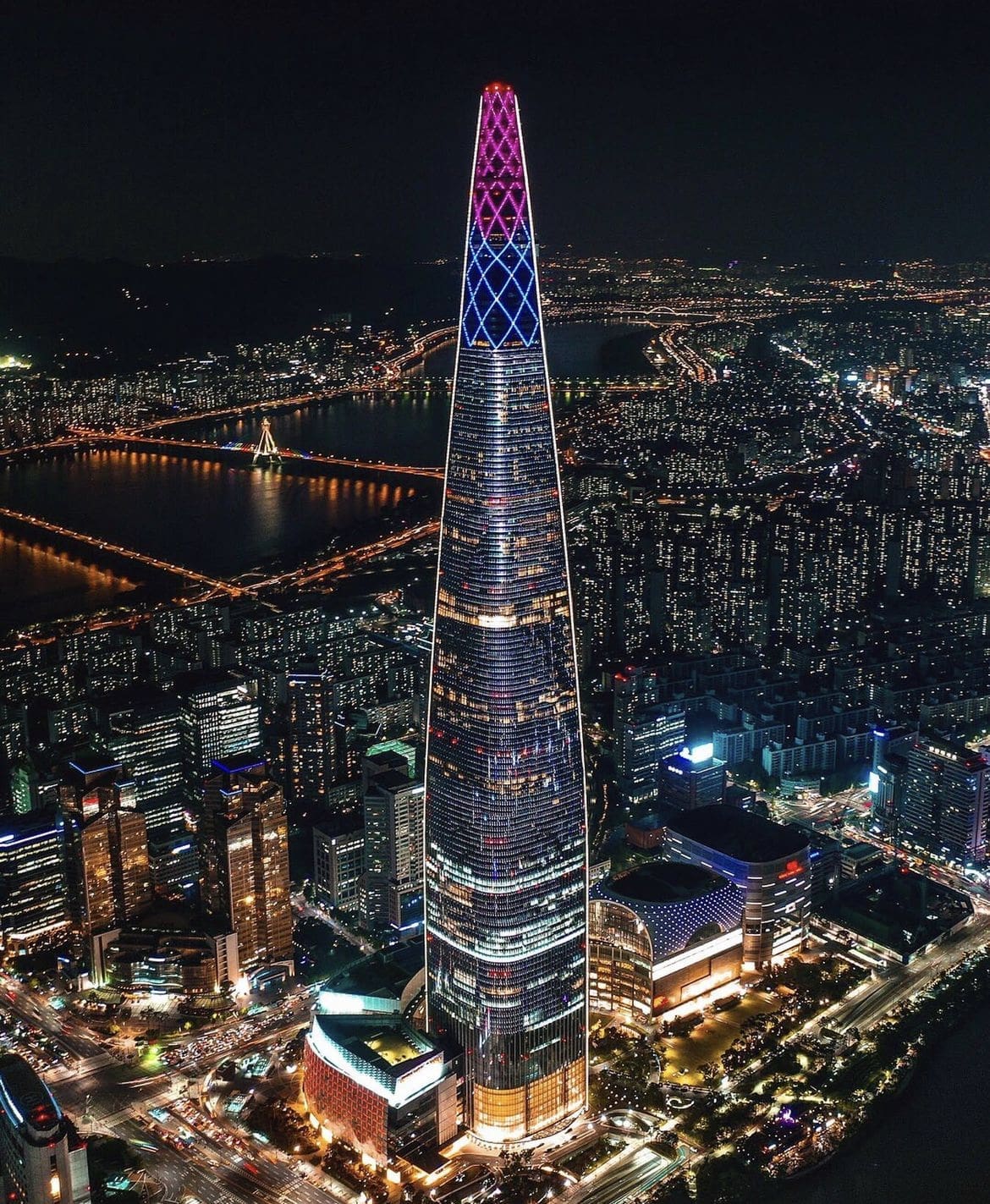
7. One World Trade Center, New York, USA
Rising from the site of the original World Trade Center destroyed on September 11, 2001, One World Trade Center in New York City stands as a beacon of resilience, freedom, and hope. Towering at 541 meters, it’s not only the tallest building in the United States but also a profound symbol of the country’s strength and determination to rebuild in the face of tragedy.
Also known as the Freedom Tower, One World Trade Center was designed with significant numbers in mind: its height in feet (1,776) symbolizes the year of American independence. The building’s architecture incorporates a new approach to skyscraper design, with a fortified base, advanced safety systems, and a spire that serves as a beacon of light visible for miles around.
Visitor Tips: The One World Observatory, located on floors 100 to 102, offers visitors panoramic views of New York City and beyond. It’s advisable to book tickets in advance to secure a spot. While in the area, take time to visit the National September 11 Memorial & Museum, a tribute to the lives lost and a place of reflection.
Why It’s a Must-See: One World Trade Center is more than a skyscraper; it’s a testament to human perseverance. Visiting this landmark offers a deeply moving experience, connecting visitors with the spirit of a city and nation that refused to be defeated, rising stronger and taller in the face of adversity.

8. Guangzhou CTF Finance Centre, Guangzhou, China
The Guangzhou CTF Finance Centre is a marvel of modern engineering and design, towering over the city at 530 meters. This skyscraper, with its sleek, streamlined form, is a centerpiece in Guangzhou’s burgeoning Tianhe District, representing China’s rapid economic development and ambition on the global stage.
The building features a mixed-use design that includes office spaces, a luxury hotel, and residential apartments. One of its most notable features is the set of mega-columns that contribute to its wind resistance, making it one of the most structurally sound and technologically advanced buildings in the world. It’s also home to one of the fastest elevators, which travels at a speed of 72 kilometers per hour, whisking visitors to the observation deck in mere seconds.
Visitor Tips: The observation deck offers stunning views of the Pearl River and the sprawling urban landscape of Guangzhou. Visitors should also explore the surrounding area, which includes some of Guangzhou’s best shopping, dining, and cultural experiences. For an unforgettable experience, visit at night when the city lights create a breathtaking backdrop.
Why It’s a Must-See: The Guangzhou CTF Finance Centre stands as a symbol of the new era of Chinese prosperity and innovation. It’s not just an architectural achievement but a cultural landmark that offers insights into the future of urban development and the dynamic spirit of Guangzhou.

9. Tianjin CTF Finance Centre, Tianjin, China
Mirroring its sister tower in Guangzhou, the Tianjin CTF Finance Centre cuts an impressive figure against the city’s skyline at 530 meters. This skyscraper, located in the burgeoning Binhai New Area of Tianjin, is a testament to the city’s place in China’s economic future. With its sleek curvature and innovative design, it represents the next step in architectural evolution.
The building’s design incorporates elements that reduce the impact of wind forces and optimize energy efficiency, making it a model of sustainability. It houses a mix of commercial offices, luxury residential apartments, and a hotel, making it a microcosm of urban life. The building’s facade, composed of glass and steel, not only adds to its aesthetic appeal but also enhances its environmental performance.
Visitor Tips: While the tower itself is a marvel, the area around it offers a glimpse into Tianjin’s rich cultural and historical heritage. Visitors can enjoy waterfront views along the Hai River, explore local markets, or dine at traditional Chinese restaurants. The observation deck provides a panoramic view of the city, showcasing its blend of modernity and tradition.
Why It’s a Must-See: The Tianjin CTF Finance Centre is not merely an architectural landmark; it’s a bridge between the past and the future, offering a unique perspective on China’s rapid urbanization and its efforts towards sustainable development. It’s a symbol of Tianjin’s ambition and a beacon of progress in the 21st century.

10. CITIC Tower, Beijing, China
Known affectionately as China Zun, the CITIC Tower in Beijing stands as a pillar of strength and elegance at 528 meters. Its design, inspired by the ancient Chinese ceremonial wine vessel known as “Zun,” reflects China’s deep cultural roots and its aspirations towards the sky. As the tallest building in the capital, it commands attention, representing Beijing’s historical significance and its future direction.
The tower’s tapered design not only pays homage to China’s artistic heritage but also serves a practical purpose in reducing wind pressure on the structure. It houses offices, luxury apartments, and cultural spaces, embodying the multifaceted nature of modern Beijing. The building’s use of environmentally friendly technologies underscores China’s commitment to sustainable urban development.
Visitor Tips: For those looking to explore Beijing from above, the CITIC Tower’s observation deck offers unmatched views of the city’s sprawling expanse, from the ancient Forbidden City to the modern Olympic Park. The tower is also surrounded by Beijing’s financial district, making it a perfect starting point for exploring the city’s blend of modernity and tradition.
Why It’s a Must-See: The CITIC Tower is more than just a tall building; it’s a symbol of Beijing’s enduring legacy and its dynamic future. Visiting this landmark offers a window into the soul of the city, where China’s past and future converge in spectacular fashion.

As our journey “Beyond the Clouds” concludes, we’re left with a sense of awe at the heights humanity has achieved through ingenuity, creativity, and perseverance. From the architectural marvels of China to the symbolic resilience of the One World Trade Center, each of these structures tells a story of ambition, innovation, and cultural identity.
They are not just buildings; they are testaments to human aspiration, standing as beacons of progress in the skyline.
These tallest structures humanity has built are more than feats of engineering; they are landmarks of what we can achieve when we reach for the sky. As you explore these giants, remember the stories they tell and the skies they touch. Let them inspire you to look beyond the clouds, to dream big, and to marvel at the boundless possibilities of our world.
